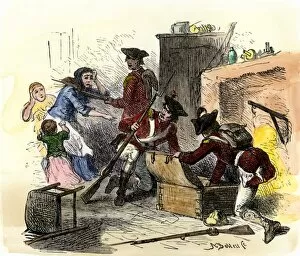Quartering Collection
"Quartering: A Dark History Unveiled" Step into the intriguing world of "quartering, " a term that evokes images of both medieval torture and military practices
All Professionally Made to Order for Quick Shipping
"Quartering: A Dark History Unveiled" Step into the intriguing world of "quartering, " a term that evokes images of both medieval torture and military practices. From the School for Butlers to historical engravings, this concept encompasses a wide range of fascinating aspects. In the realm of education, the mention of the School for Butlers sparks curiosity about refined service and etiquette. How did quartering relate to such an establishment? Perhaps it referred to specific duties or organizational methods within this prestigious institution. The Questioning illustration from Cicero Teutsch's book transports us back to Augsbourg in 1533. This black-and-white photo engraving invites contemplation on how questioning techniques were employed during that era, potentially involving some form as a means of extracting information. Moving forward in time, we encounter the Execution of Francois Ravaillac in 1610. The grayscale engraving captures a pivotal moment when King Henri IV's assassin meets his fate through drawing and quartering—an act reserved for those who committed regicide. Such scenes offer glimpses into society's response to heinous crimes during this period. Ms Lat 9187 fol. 24 Torture scene from Les Coutumes de Toulouse takes us deeper into history with its vellum depiction. Here, quartering may have been used as part of torturous punishment methods prevalent at that time—a chilling reminder of humanity's capacity for cruelty. Francois Ravaillac himself is immortalized in another black-and-white portrait engraving. His face tells tales untold—what drove him to commit such an infamous act? Did he anticipate his own gruesome end through drawing and quartering? The mention of a medieval torture device known as the Quartering Machine adds yet another layer to our exploration. This wood engraving from the 19th century offers insight into mechanisms designed specifically for inflicting pain upon victims—a haunting testament to mankind's ingenuity in creating instruments of suffering.






